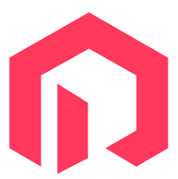Salesforce is a cutting-edge Customer Relationship Management software that brings companies and their customers together. The integrated software helps departments like commerce, ... View Profile
Best Team Collaboration Software
Team collaboration software in the USA empowers businesses to streamline communication, enhance project management, and boost productivity across remote and in-office teams. These tools provide centralized platforms for real-time collaboration, file sharing, and task tracking, enabling seamless teamwork and improved workflow efficiency. Ideal for businesses aiming to enhance team coordination and achieve better results




Personal Advisor
List Of 20 Top Team Collaboration Software for 2024 | Get Demo, Pricing & Reviews
Personalize your search

Miro is a smart platform that enables team collaboration and efficient workflows to achieve the best results. The tool helps run productive and engaging online meetings and worksho... View Profile
Check How Kantata can help to automate Indian Business. Techimply provide their list of features, pricing, Free demo and Comparison with the best alternative View Profile
Zoho Projects is the trusted project management software for over 200,000 users worldwide. With Projects, you can plan, track, collaborate and automate your way to successful proje... View Profile
Sympa is a comprehensive and HR-system that seamlessly handles the entire employee lifecycle. It’s multi-geo, easy to use and flexible. What’s more, Sympa’s extensive eco... View Profile
Smartsheet is an intuitive project management software and collaboration tool that is useful for small and mid-size organizations to track and manage various types of work. Besides... View Profile
RealityMax is an advanced 3D design collaboration platform that provides users with an unparalleled level of functionality and flexibility. With its comprehensive suite of tools an... View Profile
Slack is a communications and workflow solution designed for teams. Using Slack, you can set up channels, which can be around any theme, project, client or department. You can invi... View Profile
Wimi is a cloud-based collaboration software that can be run on Mac, Android, iOS, Windows, etc. The software helps with project management, task management, document management, c... View Profile
The search function also includes a "smart search" that looks through all of your team's content to find what you're looking for. 500apps' Teams.cc is a collaboration tool that ... View Profile
Asana is a tool that helps you manage your work and collaborate with your team more effectively. With Asana, you can organize your work into boards, portfolios, and custom fields, ... View Profile
Confluence is a powerful platform that can be used to manage online projects related to any kind of functional departments, including marketing, finance, legal, and human resources... View Profile
Backlog is an online project management software that also provides different task management solutions to teams. The software enables project management, code management, and bug ... View Profile
Check How Suppeco can help to automate Indian Business. Techimply provide their list of features, pricing, Free demo and Comparison with the best alternative View Profile
Bitrix24 is a cloud-based collaboration tool that can be used to boost team performance and encourage effortless communication. It comes with a diverse set of features that can be ... View Profile
Docsie is a web-based documentation platform that enables businesses to build, maintain and publish excellent product documentation in multiple languages. View Profile
Zoho Meeting

Online meeting software for all your video conferencing & webinar needs
Zoho Meeting is a secure online meeting platform and webinar solution that helps you connect, collaborate, and work remotely with efficacy. Schedule online meetings, stream live we... View Profile
Zoho TeamInbox is a unified inbox for all your communication channels that builds you a transparent work environment and enhances collaboration in teams. View Profile
Docsie is a product documentation software that helps users create better documents, retain customers, and simplify the way the team works on doc files. With Docsie, users can easi... View Profile
Find Best UGE Schedule Source pricing, features, user reviews, and product details. Request a free demo to see how UGE Schedule Source can help streamline your business. View Profile

Frequently Asked Questions (FAQs)
Most reputable team collaboration software providers implement robust security measures, including encryption, two-factor authentication, and compliance with data privacy regulations to protect team information.
While some users may experience a slight learning curve, most modern collaboration tools are designed with user-friendly interfaces and provide tutorials to help teams get started quickly.
Encouraging proper onboarding, providing training sessions, demonstrating the software's benefits, and soliciting feedback can help ensure that all team members utilize the software effectively.
Many team collaboration software platforms offer integrations with various third-party applications, such as CRM systems, email clients, and project management tools, to enhance functionality and streamline workflows.
Some widely used team collaboration tools include Slack, Microsoft Teams, and Zoom, each offering a unique set of features tailored to different team needs.














.jpg)



